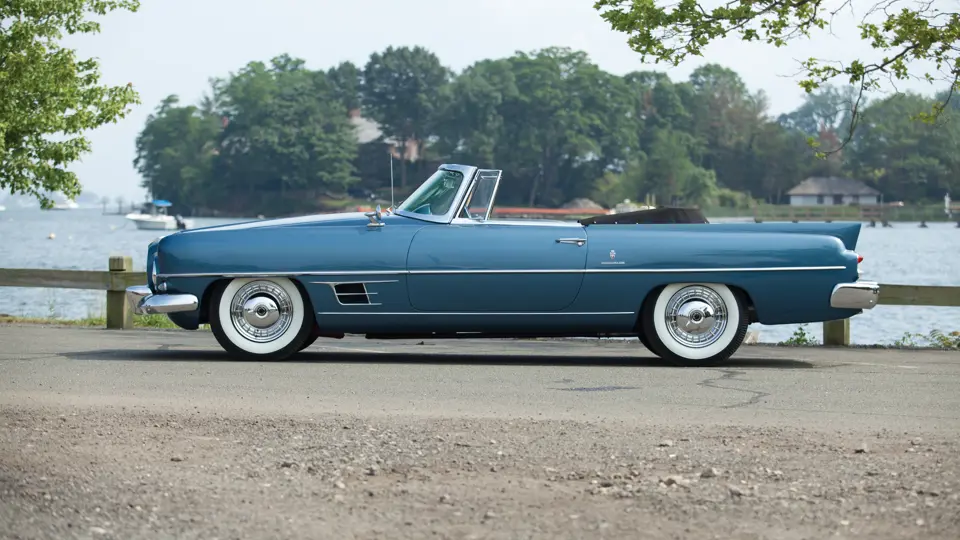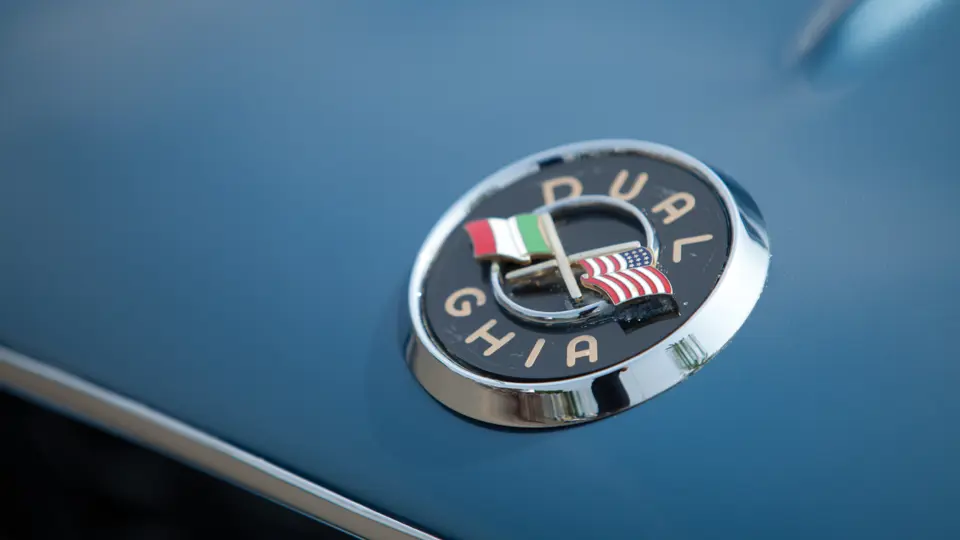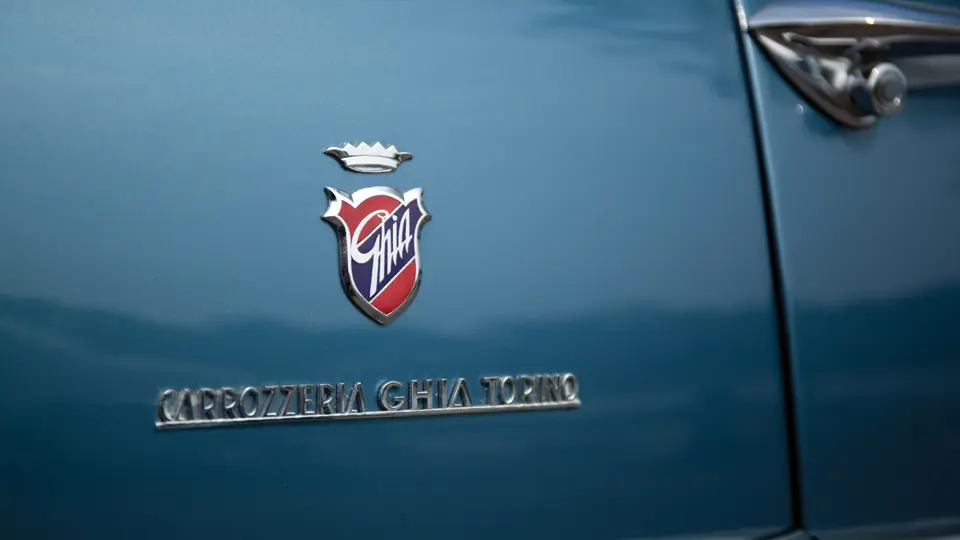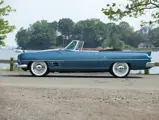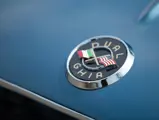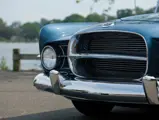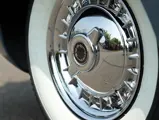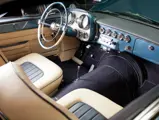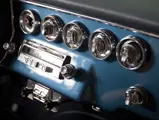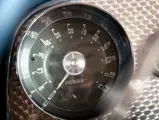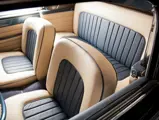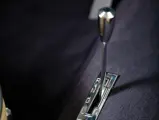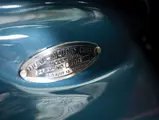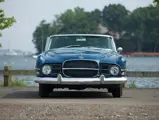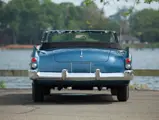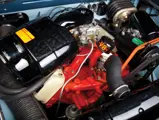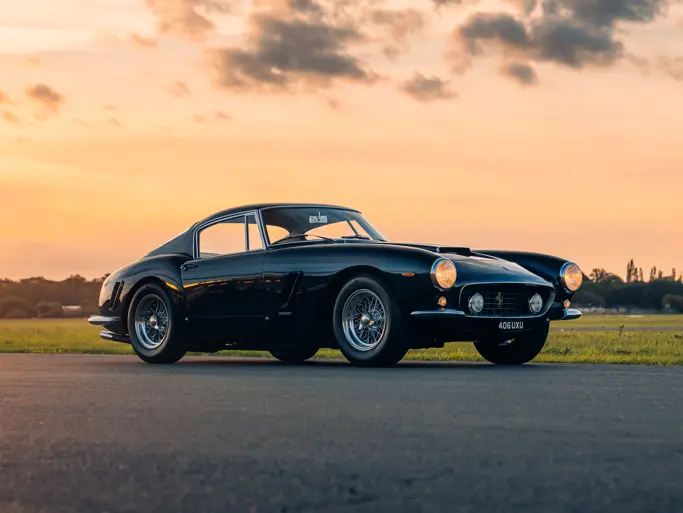230 hp, 315 cu. in. Dodge D-500 “Red Ram” V-8 engine, Carter four-barrel carburetor, Chrysler Powerflite two-speed automatic transmission, independent front suspension with unequal length A-arms and coil springs, live rear axle and semi-elliptic leaf springs, and four-wheel hydraulic drum brakes. Wheelbase: 115 in.
When Chrysler opted out of putting its striking Dodge Firearrow show cars into production, Detroit trucking magnate Eugene Casaroll purchased the rights to the design. By 1957, his Dual Motors, named for the twin-engined trucks that the factory once produced, had a modified version of the Firearrow in production. Known as the Dual-Ghia, it featured an unbeatable combination of reliable Motor City-bred Dodge V-8 power and gorgeous hand-beaten bodywork by noted Italian carrozzeria Ghia of Turin. Exhaustive attention to detail and extensive handcraftsmanship resulted in a beautifully finished automobile, with a luxurious interior that featured such sporty notions as front bucket seats and a dashboard with a full set of instruments, set against engine-turned aluminum.
Casaroll’s genius was in recognizing the value of social status and upper-class appeal. Long before the Ferrari factory studied how many of a car they could sell and then built one fewer to ensure demand, the father of the Dual-Ghia personally hand-chose his customers from a list of clamoring applicants. Frank Sinatra, at the time the brightest of all stars, was a natural choice, as were his friends Peter Lawford and Eddie Fisher. Writing in their seminal Dual-Ghia history, published in Automobile Quarterly, John Martens and Dr. Paul Sable recounted a would-be buyer in Brooklyn who refused a car on the grounds that one had already been delivered there. He then offered to move to Connecticut, only to be told that one had already been sent to the Constitution State as well.
It was this one-up-manship that led legendary Hollywood columnist Dorothy Kilgallen to wisecrack that a Rolls-Royce was the “status symbol for those who can’t get a Ghia.” Presumably, there were a lot of Rolls-Royces delivered in the late 1950s, as only about 100 Dual-Ghias were made between 1956 and 1958. With the exception of a duo of prototype coupes, all were convertibles.
The car shown here is believed to be chassis number 100, which would make it the very first production Dual-Ghia built and, as a result, one of the most historically significant Dual-Ghias surviving. It is important to note that prior to this car’s discovery many years ago, chassis number 101, Casaroll’s own, was thought to be the earliest surviving car; it is believed that this car, built prior, was a late-stage prototype.
Formerly owned by noted collector Ken McBride, the convertible was eventually acquired by the respected historian and enthusiast Joe Morgan, whose knowledge of these cars is exhaustive and his reputation for high-quality work is well known. Mr. Morgan spent three years restoring this car to as near original condition as possible; he recalls, “We took it down to the bare bones,” returning every nut and bolt to pristine form. The motor and transmission were rebuilt, the driveshaft remanufactured, new wiring installed, and the rear axle properly rebuilt.
Importantly, this car retains the many unique detail features only seen on the first handful of Dual-Ghias, including a single support arm for the trunk, padded trim around the dashboard, a unique steering wheel, and no ashtray. It was originally fitted with hand-cranked windows, but these proved impossible to restore properly, so correct power lifts, as installed on the vast majority of Dual-Ghias, were fitted.
As a result, this Dual-Ghia surely stands among the best remaining examples. Equally important, the car has not been publically shown since the restoration’s completion, allowing the new owner to proudly flaunt this automobile at the show or concours of his or her choosing.
This is a very special and prestigious example of one of the most elite and exclusive automobiles of its generation.


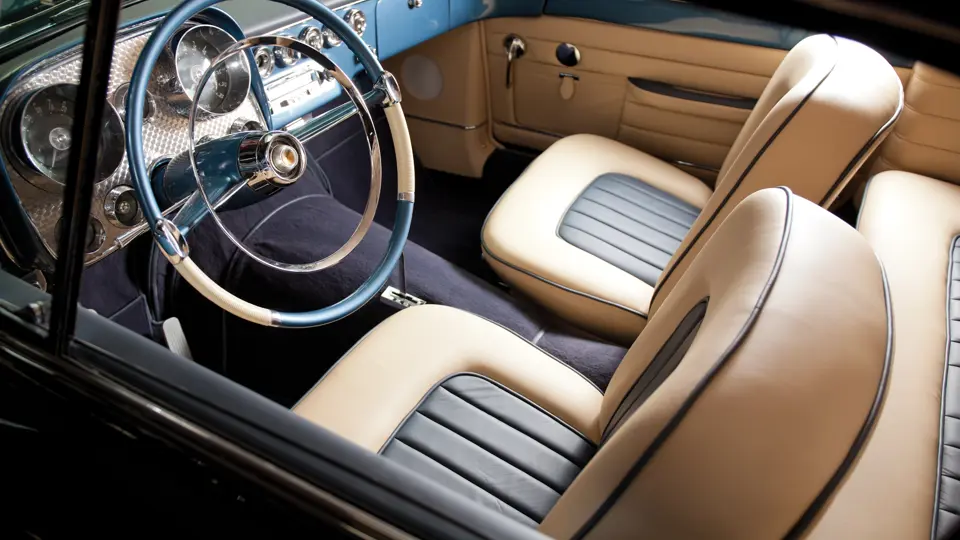

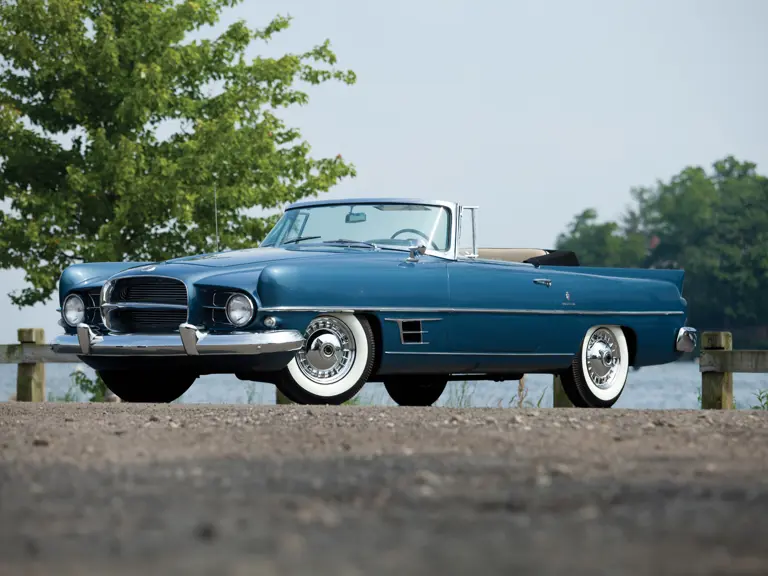

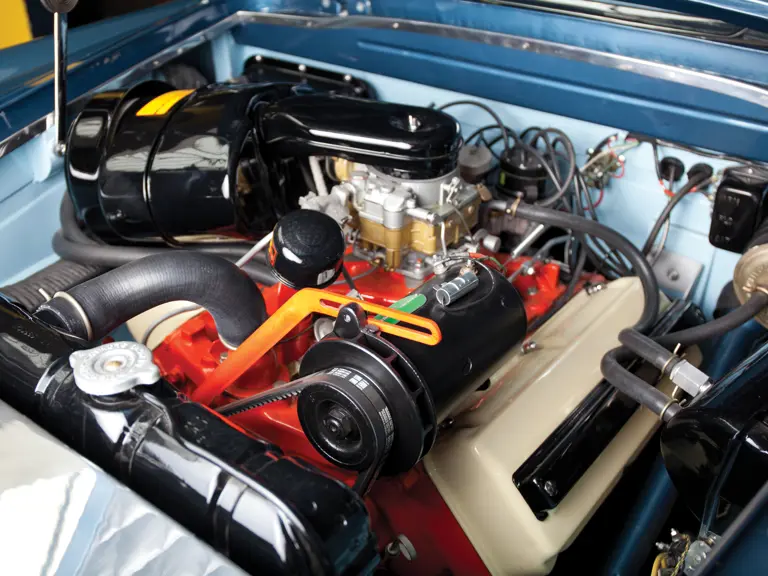
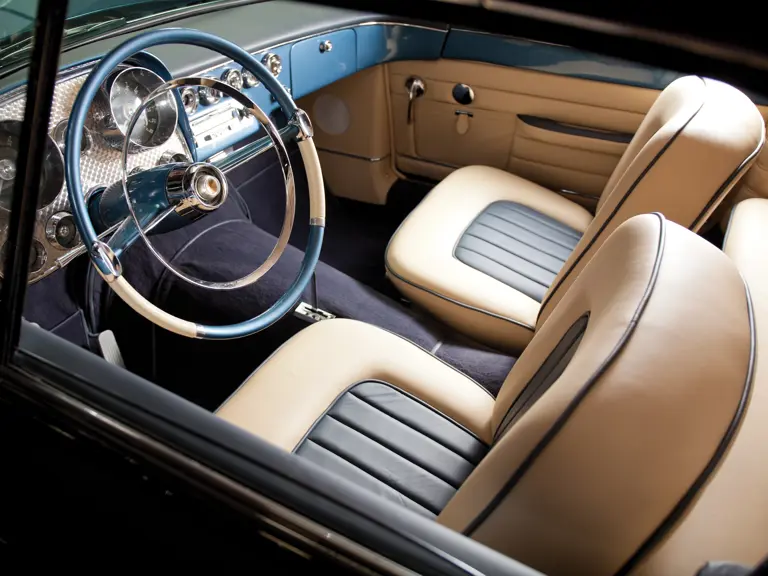
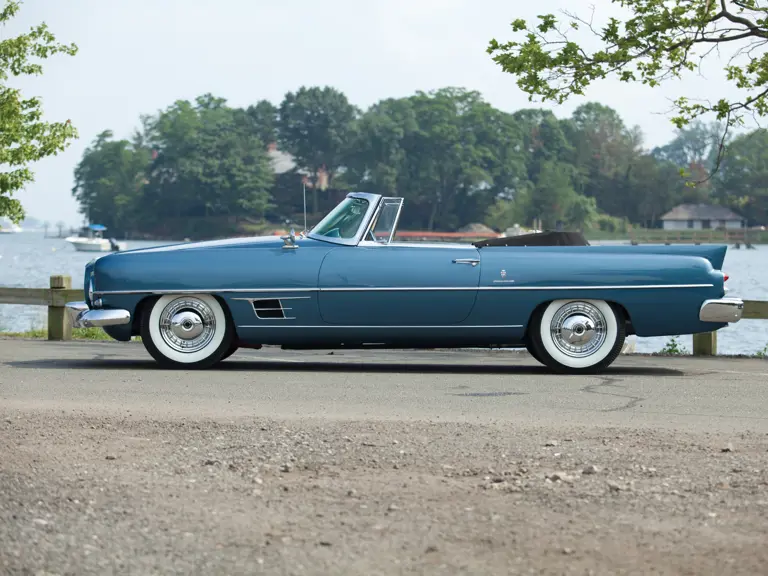


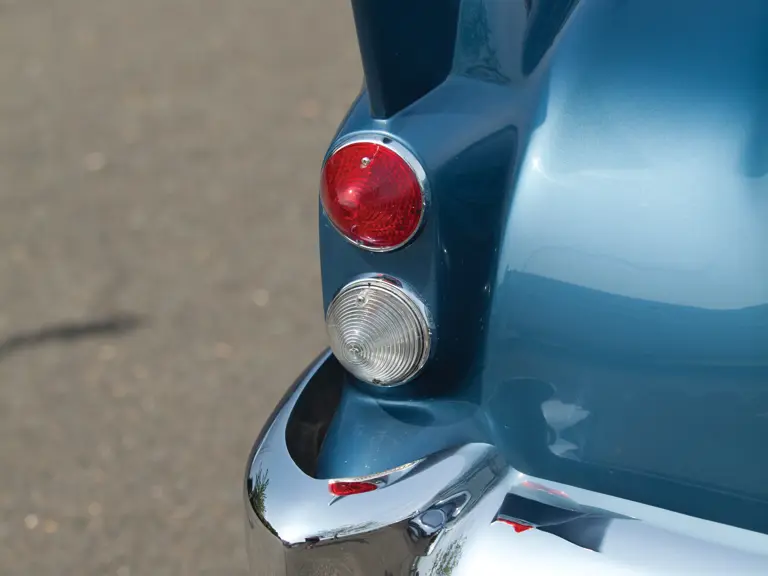
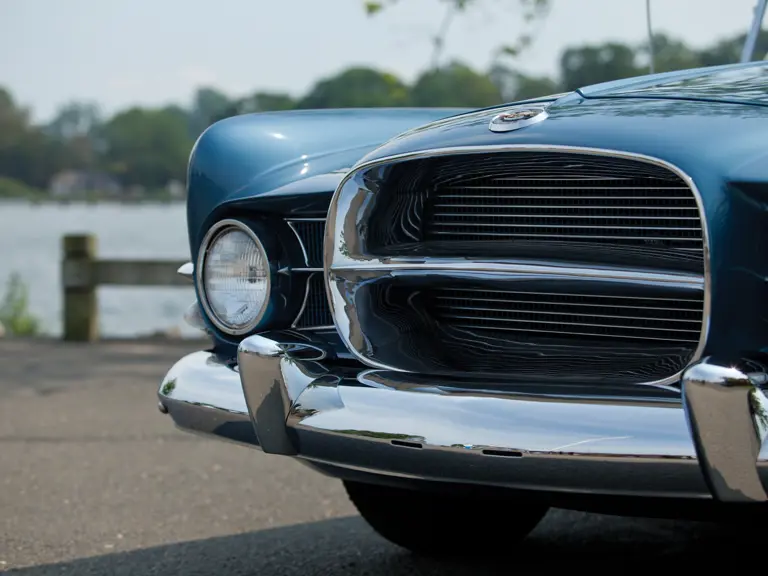
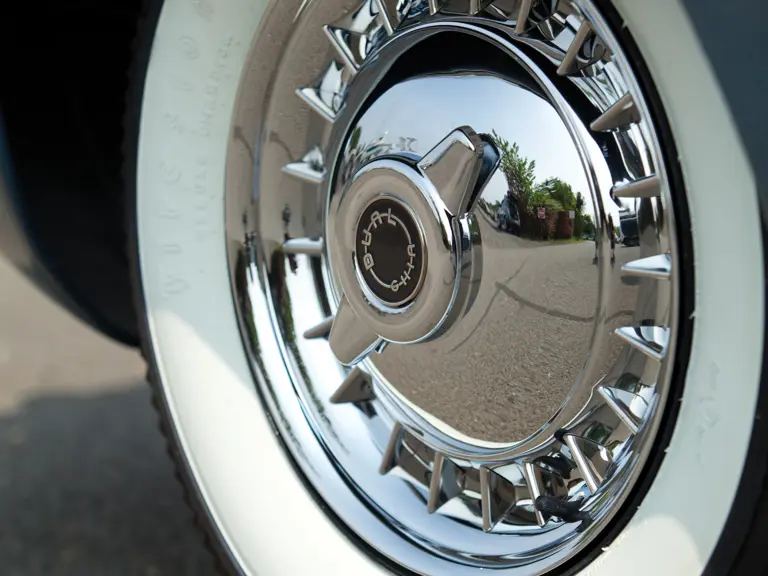



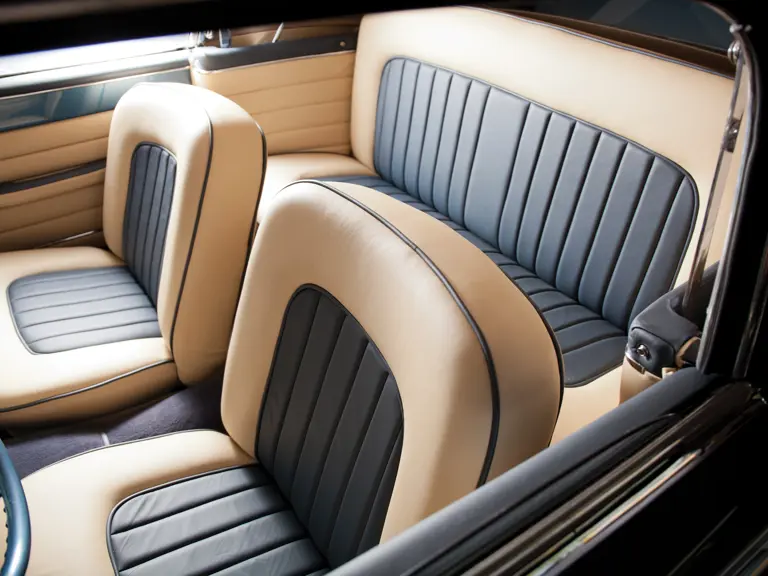

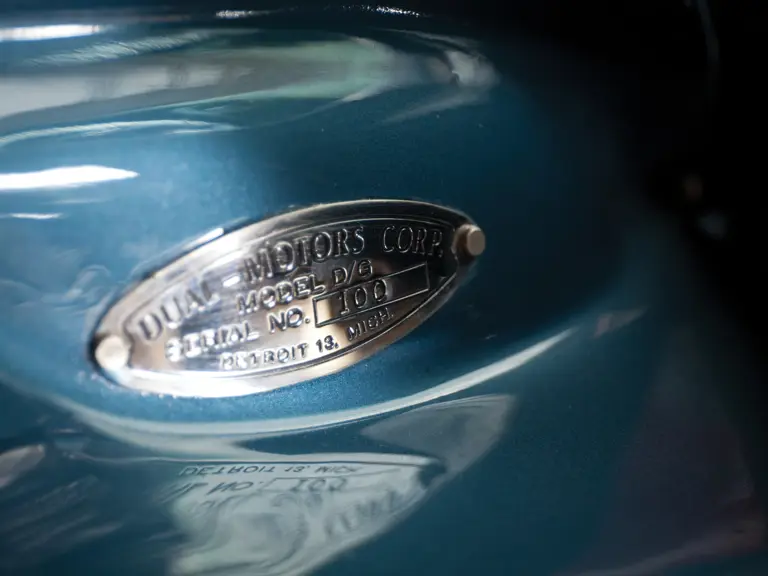

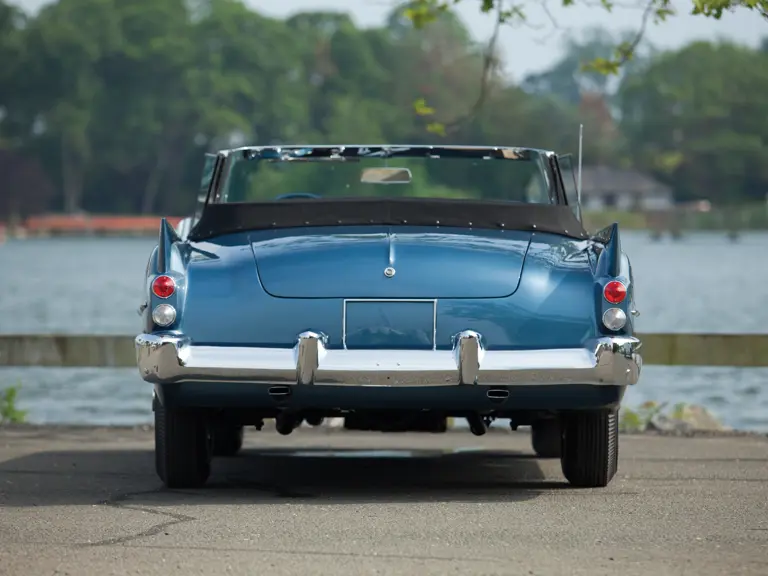
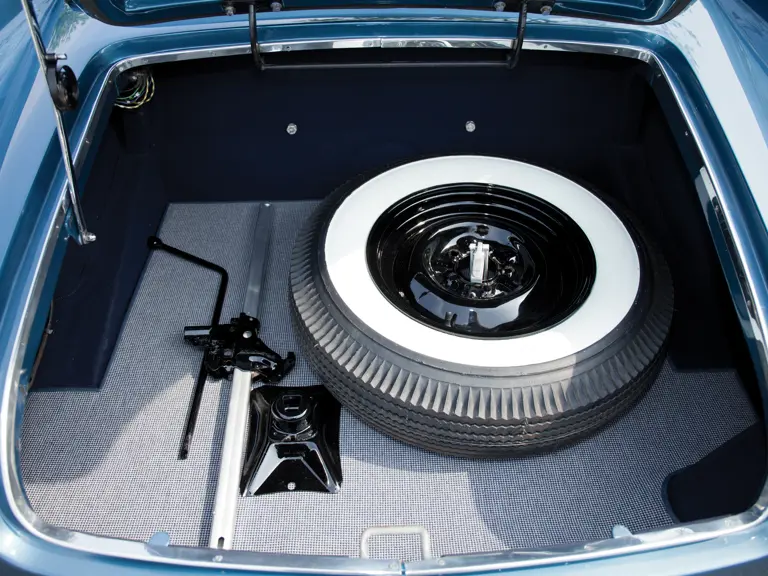
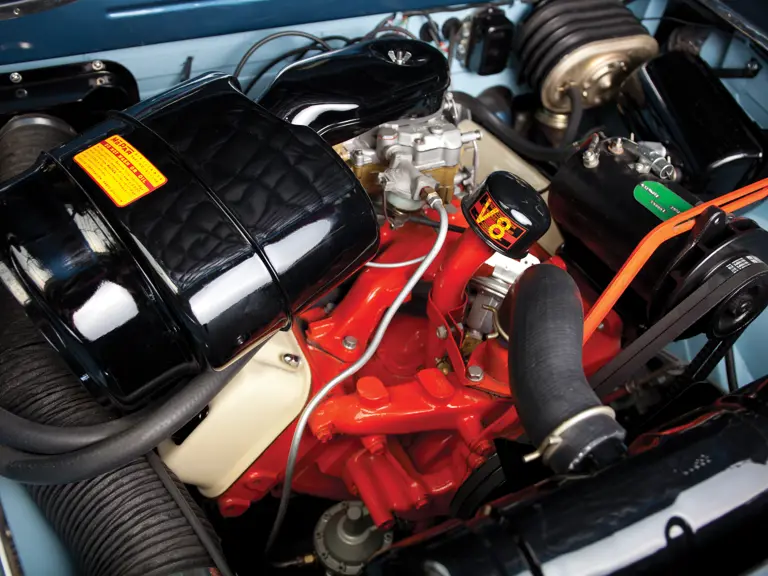

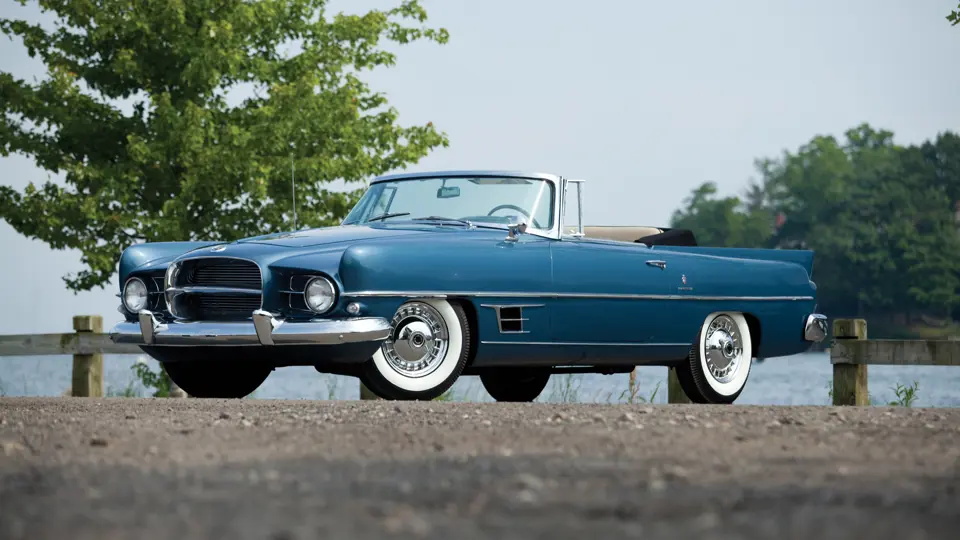
 | Monterey, California
| Monterey, California
